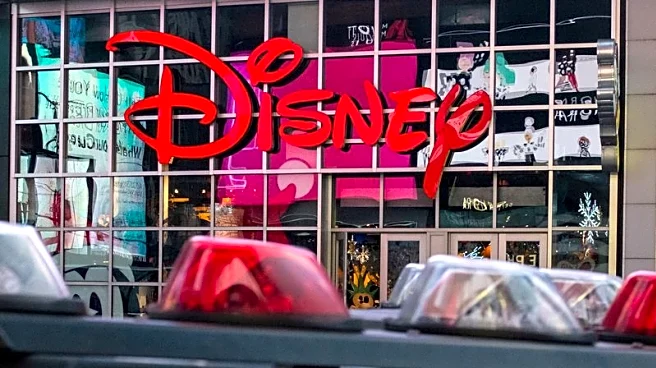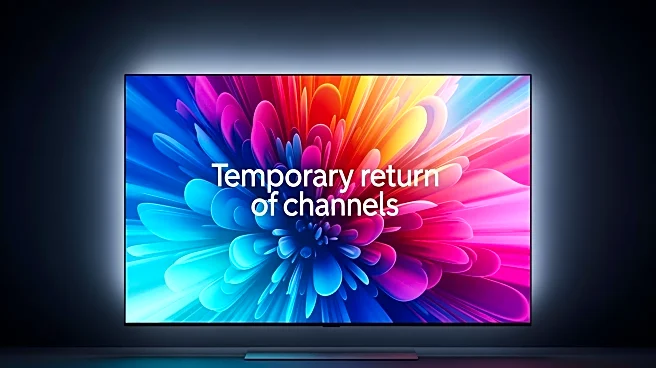What's Happening?
A contract dispute between Disney and YouTube TV has resulted in the removal of ESPN, ABC, FX, and other Disney-owned channels from the streaming service. The disagreement centers around the 'carriage fee' that Google pays Disney to broadcast its channels.
Disney requested YouTube TV to restore its ABC channel for U.S. election coverage, but YouTube TV rejected the request, citing potential customer confusion. YouTube TV proposed restoring Disney channels like ABC and ESPN while negotiations continue. Disney claims YouTube TV is not paying enough to stream its channels, and YouTube TV has offered subscribers a $20 credit if content remains unavailable for an extended period.
Why It's Important?
The dispute between Disney and YouTube TV impacts millions of subscribers who rely on these channels for sports and entertainment. The removal of popular channels like ESPN and ABC could lead to subscriber dissatisfaction and potential loss for YouTube TV. Disney's stance highlights ongoing challenges in negotiating fair carriage fees, which could affect future agreements with other streaming services. The situation underscores the competitive dynamics in the streaming industry, where content providers and platforms must balance financial interests with customer satisfaction.
What's Next?
Negotiations between Disney and YouTube TV are ongoing, with both companies publicly addressing the issue. Subscribers may seek alternative services like ESPN+, Sling TV, Hulu + Live TV, Fubo, or DirectTV Stream to access the removed channels. The outcome of this dispute could set a precedent for future carriage fee negotiations between content providers and streaming platforms. Stakeholders in the streaming industry will be closely monitoring the resolution, as it may influence similar disputes in the future.
Beyond the Headlines
The dispute raises questions about the power dynamics between major content providers and streaming platforms. Disney's accusation that YouTube TV is using its resources to eliminate competition highlights concerns about market consolidation and its impact on content diversity. The situation also reflects broader trends in media consumption, where viewers increasingly rely on streaming services for live events and news coverage.














